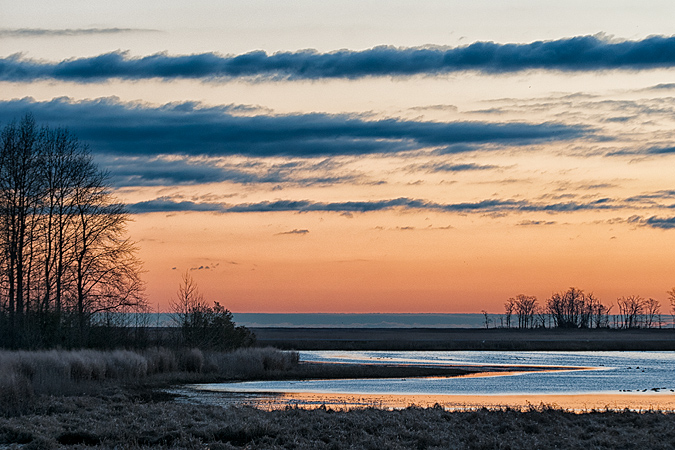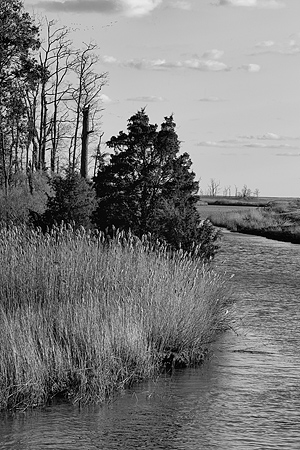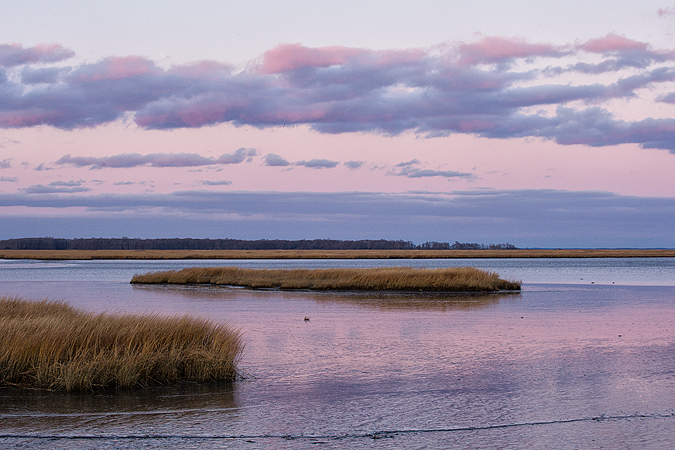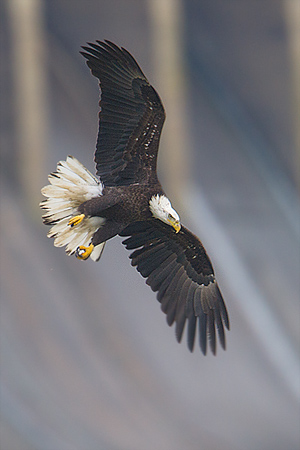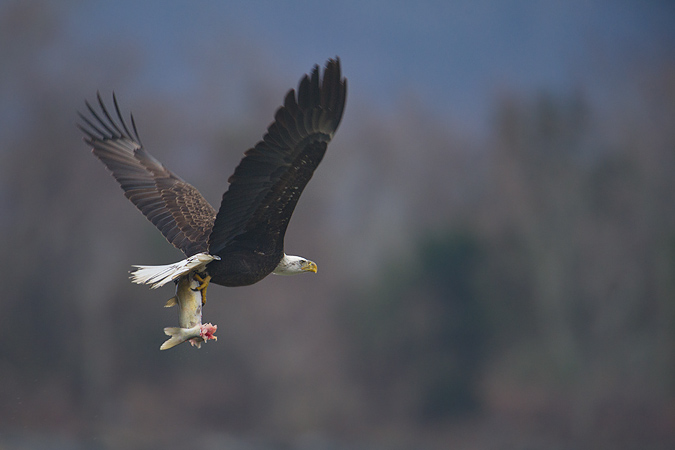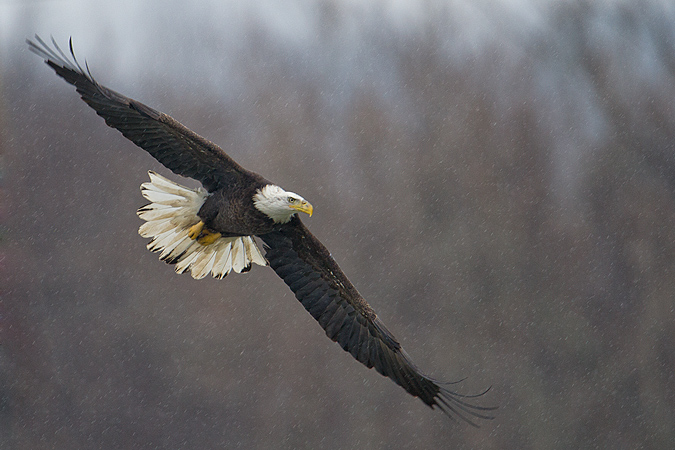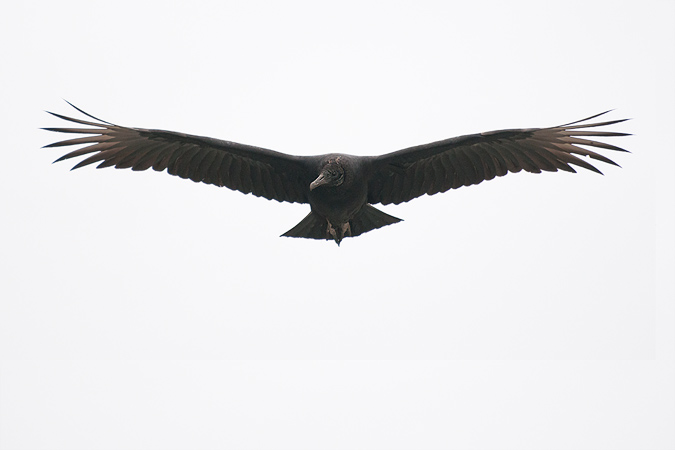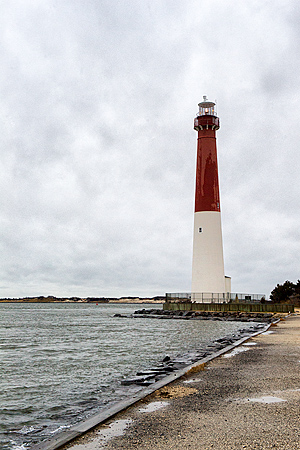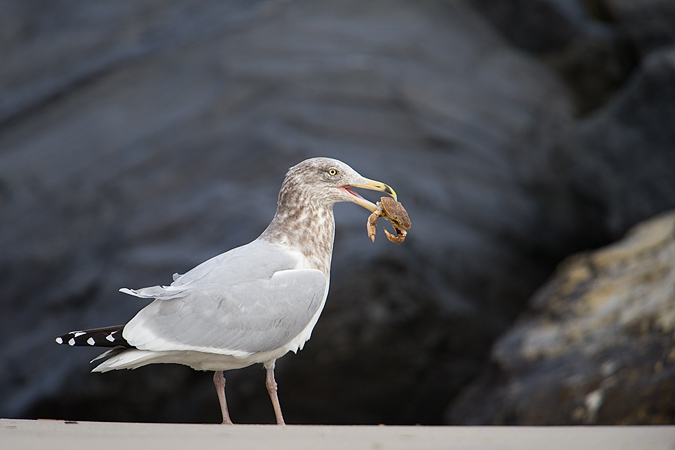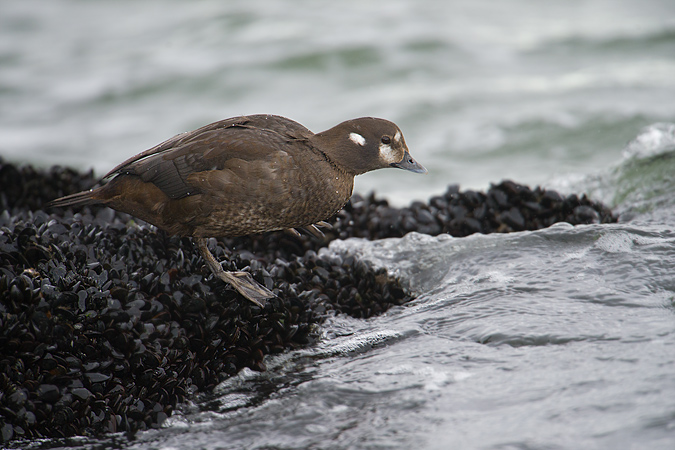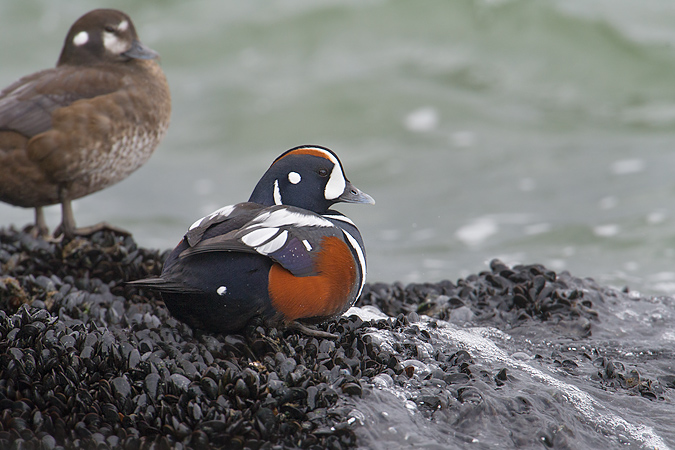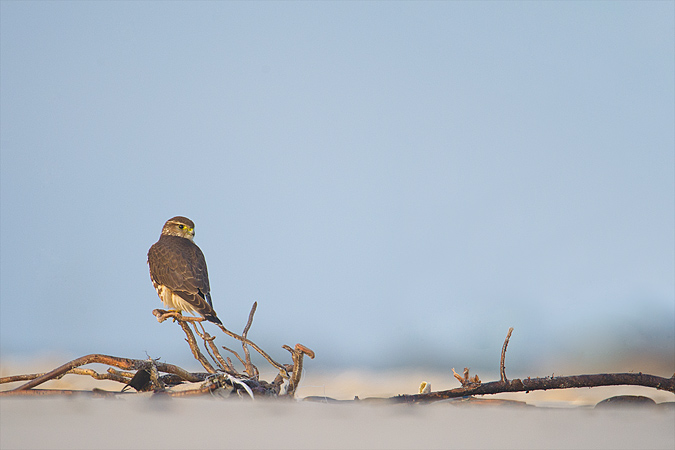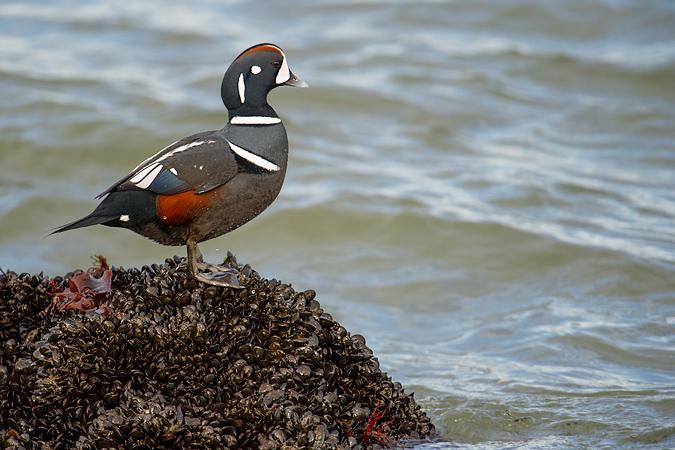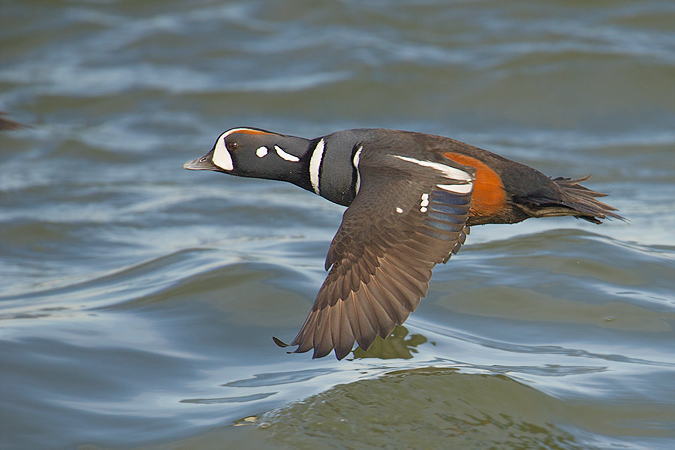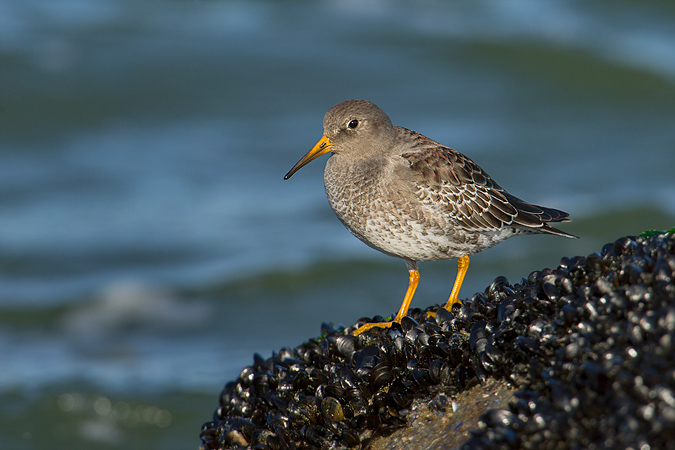When your original plan falls through you need to go to your backup. First of all, that means you must have a backup. It’s something I’ve found to be very helpful in my photography. So the Bald Eagles weren’t catching enough fish, so I decided to try going to Bombay Hook National Wildlife Refuge. This is about an hour away from the hotel I was staying at, but I had heard great things about Bombay Hook, so off I was going before dawn. I got there in time to be in the field as the sky graced the world with its light. There were some great scenics before the sun came up.
I had come to Bombay Hook looking for wildlife – Red Foxes and Snow Geese in particular, but the landscapes were gorgeous. The light doesn’t for anyone though. After spending some time capturing some of the landscapes, I started to drive around the refuge. I had missed the big blast-off of geese when I captured the early landscapes, but there were a couple of geese who hung around on the refuge. Most depart for the day to feed in various fields and water around the area. This was one Snow Goose that did stay around.
The rumors about Bombay Hook were true. I saw a lot of foxes. Quite a lot – more than I was hoping for. The problem was that most of the foxes that I saw had a bad case of mange. I couldn’t help but feel for the foxes with mange. The cold days were just starting and it must be terrible to be an animal that doesn’t hibernate like the foxes and be missing half of your warm, fluffy coat. In the end, I finally found a fox with a gorgeous winter coat. There was no snow on the ground like I had dreamed for, but no matter this fox was breathtaking.
The fox was my primary target and I would have loved to have gotten a whole series of fantastic fox images. I got a few, but most of the time the fox spent buried in the high grasses around the refuge. The fox was actively hunting and I spent quite a while with it before someone pulled up behind me and decided it was a great idea to hop out of his car and walk right up to the fox for a photo. Of course, like any self-respecting fox, it ran away into the cover of dense vegetation not to come out again. There are signs up all over the refuge telling people not to approach the foxes, and this fox was so cooperative too… Anyway, the marshes at Bombay Hook are really pretty – the mix of trees, marsh, and ponds makes this place have so much beauty. I wish I had a few days to spend just working the landscapes. I didn’t, but in the limited time I did have, I had some fun shooting a few scenes.
I’ll definitely have to come back to Bombay Hook both for the foxes and for the marshes. It would definitely be a great place to see in other seasons. It was a busy place thought. At the Barnegat Jetty, I saw only a couple of people all day. Here I saw twenty or more cars in an hour and this was over the holiday period. As the sun began to set, the Snow Geese returned in huge droves. The numbers here dwarfed the flocks I had seen down on the Outer Banks. I could not guess the numbers – it was surely in excess of 50,000 perhaps many more. In any case, it was a fitting end that I ended the day as it had started – photographing the marsh with the last remaining light.
So let’s say you have the opportunity to stop wherever you would like between South Carolina and Connecticut to photograph during the winter. Where would you go? I spent a lot of time planning each and every stop and with only a limited amount of time and money on my hands my choices revolved around a few criteria. First of all, I wanted what I call “odds you can bet on”. That means that I wanted locations that are going to be productive 99% of the time. There might be a place that’s great for bobcats. But from experience with something like that in a place you don’t know, you are going to fail most times. If you get lucky, you might have fantastic results, but I wanted something I can count on. Not every stop was like this though. I also wanted to hit subjects that I know are popular and with 4 stops, I can afford one that doesn’t have “odds you can bet on”. With places that I have experience with, I also always want a backup plan in case something goes wrong – you just can’t predict with wildlife. That brought me to Conowingo Dam in Maryland. As always, I did a quick look around to check for possibilities. The dam had a lot of visitors but most everyone was ignoring the dozens of Black Vultures around. Even, flat, overcast light is fantastic for bringing out the detail in black subjects and if you throw in the rain that was drizzling, you have a great opportunity in my book.
There was one reason and only one reason I chose to stop here. The Susquehanna River and the dam here create special conditions that are supposed to be great for photographing Bald Eagles. We have Bald Eagles in South Carolina, but here there are supposed to be a lot more and much more importantly they actively fish in a somewhat predictable location. This place was a bit of a gamble though. The big question mark is that I didn’t know how it would be photographically speaking. Considering that the nearest reliable place to photograph fishing eagles without a boat that I know of was in Iowa, it was a gamble I was willing to take. But I definitely lost on this gamble. There are two big problems with photographing here. You can see the first problem here. The background of this shot is one I really don’t like. The problem with the dam is the dam. Between the dam, power lines, and some big metal towers, the background in most directions aren’t good and unless the eagle is super close to you, you can’t really blur the background out fully.
So you have a limited range of view where the background are clean. If you do get an eagle in this area of the background, it brings us to the second major problem: the fish that the eagles are here for. The reason the eagles come here is that the dam opens up periodically. When it does, fish pass through the turbines and many of them are cut up making them easy pickings for the gulls and eagles that wait downstream. But the fish really get cut up and it just isn’t a good story to tell of an eagle catching a cut up fish.
Aside from the unavoidable problems, I had further bad luck at Conowingo Dam. There just weren’t that many eagles around. There were maybe 10, a far cry of the 100+ eagles that are there during its peak. Some of this is timing (I can’t move Christmas), but some of this is just bad luck. To make matters worse, most of the eagles stayed very far away on the opposite side of a very wide river and did most of their fishing there. Sure there are photos to be had, but under these conditions they were very few – especially compared with places like the Outer Banks and the Barnegat Jetty. For me, my favorite eagle shot of the day was probably this flight image. I am a sucker for snow in wildlife photos, especially since it is so rare for me now that I live in South Carolina.
In a nutshell, I was disappointed with Conowingo Dam. I was able to get a few decent photos, but not many. With all day in one place and barely getting ten decent photos, it was a bit of a let-down. However it was great fun to watch the eagles I did see and I was privy to some great things. Once an eagle turned its attention to a flock of pigeons that was sitting on a rock a few feet away. The eagle snatched one of the unfortunate pigeons for its next dinner. I still can’t imagine why the pigeons landed right next to the eagles. Some of my favorite shots of the day wound up coming from the Black Vultures rather than the eagles. Unfortunately they only stayed in the area for a little bit of the morning. I was left with a decision for tomorrow – do I stick it out with the eagles or do I turn to the backup plan?
Christmas is right around the corner, but I had a morning that I could get some photography in before it would be time to start the final leg of the drive to Connecticut for the holidays. After reviewing my images over the evening and seeing that I had a good number of sharp images with hand-holding the 600mm even with a teleconverter, I was excited to get back in the field and try some more. My arm was sore from the previous day (the lens is heavy), but it was only half a day. The rocky shore of the Barnegat Jetty beckoned once more, and with another cold, windy day before Christmas, it felt like I had the place to myself. I made a brief stop to photograph the lighthouse itself before dawn.
There are a few things I do every time I go into the field. Most important is that I don’t immediately begin photographing what I came for. Instead I take some time to survey the scene and look for other good opportunities no matter where they come from. So before heading over to where the Harlequin Ducks are, I spotted a bunch of gulls who were having a party. Something was happening with the tide and the gulls were able to catch crabs and starfish and they were fighting over everything that was caught. It was amazing how fast they can dismantle a crab. The soft, muted overcast light was great to bring out the details of this Herring Gull who won some of the spoils.
The sunlight had come out by the time I made my way over to the Harlequin Ducks. Ducks are often hard to expose for and the Harlequin Ducks are particularly difficult. They have a lot of detail in the darks, but they also have these bright white patches that are easy to overexpose. This was one of the rare times I could get a good exposure on them with direct sunlight since the sun was only minutes over the horizon, but normally you need overcast light. The ducks, like this drake, were pretty tame, often swimming only a few feet away.
After the few minutes of sunshine, the clouds were back and I was glad of it. It is easy to spend a whole day focusing on the drake Harlequin Ducks – they are so handsome. They were the main reason I stopped in New Jersey after all. But the males are only half of the story. The females are needed for the rest of the story. As the tide starts to come back in, the ducks are forced off their rocks and go back to swimming. This hen is about to jump in after a wave took her mate back into the water.
The ducks do most of their swimming and feeding between the tides and rest on the rocks during the low tide. They collect together in small groups of about half a dozen and find some cozy rocks to sit on. The rocks at the jetty are tall – very tall. At low tide, you are about 20 feet from the water’s level. So that means to get decent shots you have to climb down these slippery rocks all while holding your camera and moving slowly enough not to startle the ducks. Getting a high-up shot of the ducks from a distance is quite easy here, but it takes a lot of time and work to move into position for a photo like this drake on the mussel-covered rocks. Even if you don’t get a great photo, just spending time with the handsome and charismatic Harlequin Ducks is reward enough for the hours you spend crawling slowly on the rocks.
After a great day photographing, I was almost reluctant to leave. I definitely was excited to see my family and have some of the wonderful food that I knew would be there. Have a merry Christmas everyone!!!
For a portion of my life New Jersey was home. I spent four great years while in college at Princeton, but after graduation, I never returned to the state. Living in Michigan, New Jersey just wasn’t on the route to anywhere. Now years later I find myself in New Jersey again. The time is short – only a day and half right before Christmas, but it’s what you do with the time not how much you have. I’m probably one of the only people staying in Atlantic City who ignores the casinos and comes to the Barnegat Jetty instead. This rocky jetty sticks out from a lighthouse and attracts all kinds of ocean birds. Things got off to a rolling start before the sun had even risen with a Merlin who came to hunt the shorebirds. Yes, I’m crawling in the sand as usual for this photo.
The Merlin was great, but what I really came to the area for were the Harlequin Ducks. These colorful little guys are simply adorable and the Barnegat Jetty is one of the best places for photographing them. As I made my way from the sandy beach over to the jetty, disaster struck. My 600mm lens is only a month old and simply put, I’m in love with it. While walking the screws that hold the lens to the quick release plate decided to strip out! This instantly separated my rig (camera and lens) from the tripod while I was carrying it. Luckily I caught the lens and camera preventing greater damage. But now I was essentially tripodless and near the beginning of a long trip… Left with no option except quitting, I decided to handhold the 600. If you had asked me if it was possible to handhold a 600 and get sharp images I would have thought you were crazy, but necessity breeds innovation. The Harlequin Ducks were there at the jetty and when I got back to the computer at the end of the day, I managed to make a surprising number of sharp images.
I still couldn’t believe that I was handholding the 600mm. It required the best possible handholding technique and I couldn’t hold it for long periods of time without needing a rest, but it was possible. I was even able to make some flight shots with it and the 1.4x teleconverter like this flying Harlequin Duck. It was an overcast day with low light too – the ISO performance of the D3S saved me once again.
The Barnegat Jetty is a fantastic place to photograph. Not only does it have some species that are hard to find, but the jetty itself is great. Rocky shores are basically non-existent on the East Coast south of New England, but the jetty gives big rocks covered with rich algae or encrusted with mussels. This makes for some great environments in the shots. To me, the environment is nearly as important as the subject in telling its story. Aside from the Harlequin Ducks, Purple Sandpipers were the other reason I came to the jetty. A photo of a Purple Sandpiper would have been great, but since their natural habitat is feeding on rocky coastlines one on a mussel-covered rock takes it up a level.
It was a cold, windy and cloudy day right before Christmas. This meant that during the day, there was basically just me and an occasional fisherman out on the jetty. This meant I could slowly approach the shorebirds and never had to fear a passerby scaring away the birds. In addition to the Harlequin Ducks and Purple Sandpipers, there were also some of the same species that are common at home. But again, the rocky habitat makes for quite a different photo. This Ruddy Turnstone was one of the birds we see quite often back in South Carolina.
Nearly a thousand miles away, but one of my favorite shots of the day came from a lowly bird that is so common in South Carolina that people often ignore it. The combination of an algae covered rock, the out-of-focus rocks in the background that frame the bird, and some great late light that came out made the image stand out in my eyes. I’m certainly not going to tell this Dunlin that he’s just a common bird.

